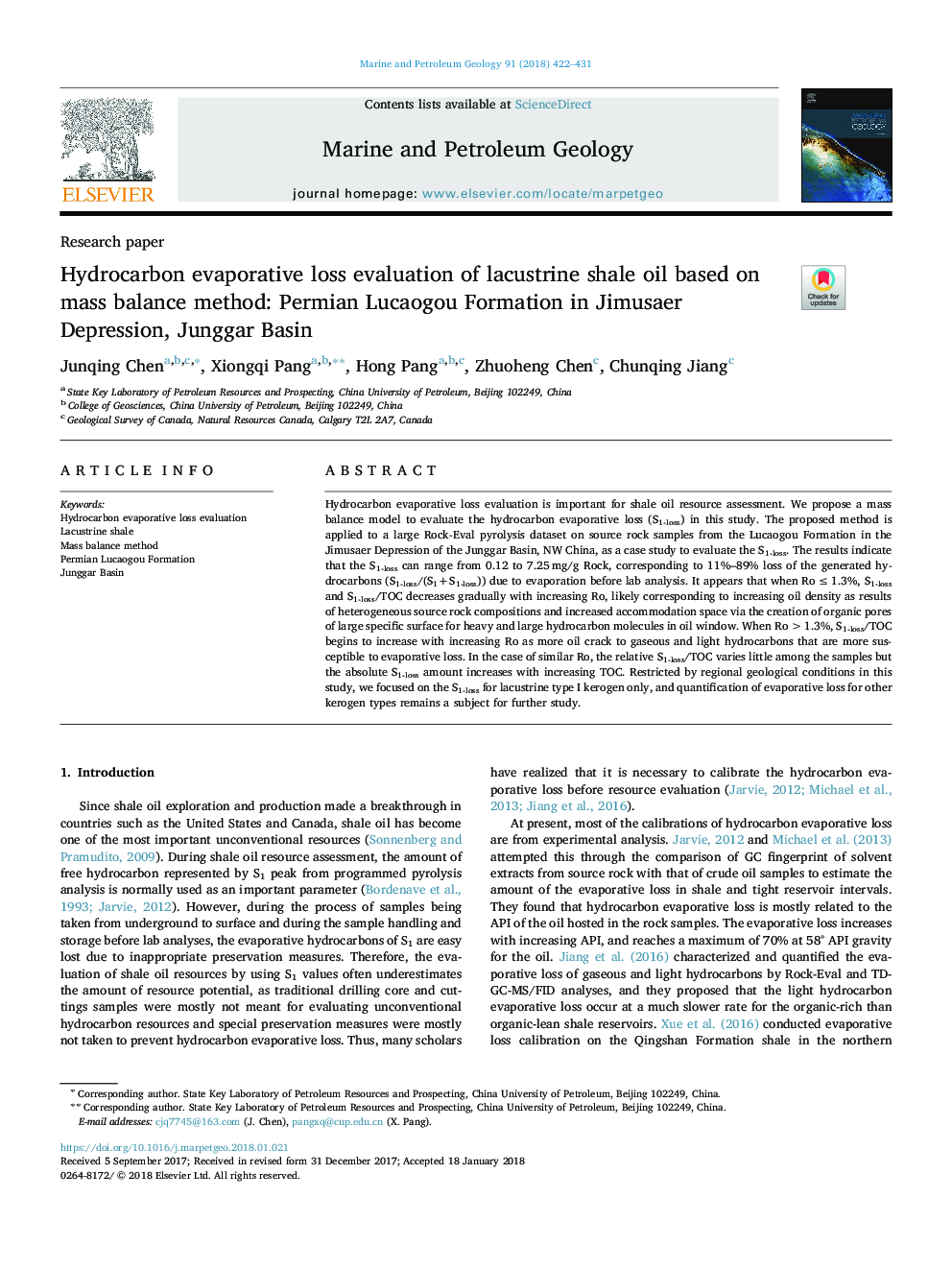| Article ID | Journal | Published Year | Pages | File Type |
|---|---|---|---|---|
| 8909200 | Marine and Petroleum Geology | 2018 | 10 Pages |
Abstract
Hydrocarbon evaporative loss evaluation is important for shale oil resource assessment. We propose a mass balance model to evaluate the hydrocarbon evaporative loss (S1-loss) in this study. The proposed method is applied to a large Rock-Eval pyrolysis dataset on source rock samples from the Lucaogou Formation in the Jimusaer Depression of the Junggar Basin, NW China, as a case study to evaluate the S1-loss. The results indicate that the S1-loss can range from 0.12 to 7.25â¯mg/g Rock, corresponding to 11%-89% loss of the generated hydrocarbons (S1-loss/(S1+S1-loss)) due to evaporation before lab analysis. It appears that when Roâ¯â¤â¯1.3%, S1-loss and S1-loss/TOC decreases gradually with increasing Ro, likely corresponding to increasing oil density as results of heterogeneous source rock compositions and increased accommodation space via the creation of organic pores of large specific surface for heavy and large hydrocarbon molecules in oil window. When Ro > 1.3%, S1-loss/TOC begins to increase with increasing Ro as more oil crack to gaseous and light hydrocarbons that are more susceptible to evaporative loss. In the case of similar Ro, the relative S1-loss/TOC varies little among the samples but the absolute S1-loss amount increases with increasing TOC. Restricted by regional geological conditions in this study, we focused on the S1-loss for lacustrine type I kerogen only, and quantification of evaporative loss for other kerogen types remains a subject for further study.
Related Topics
Physical Sciences and Engineering
Earth and Planetary Sciences
Economic Geology
Authors
Junqing Chen, Xiongqi Pang, Hong Pang, Zhuoheng Chen, Chunqing Jiang,
